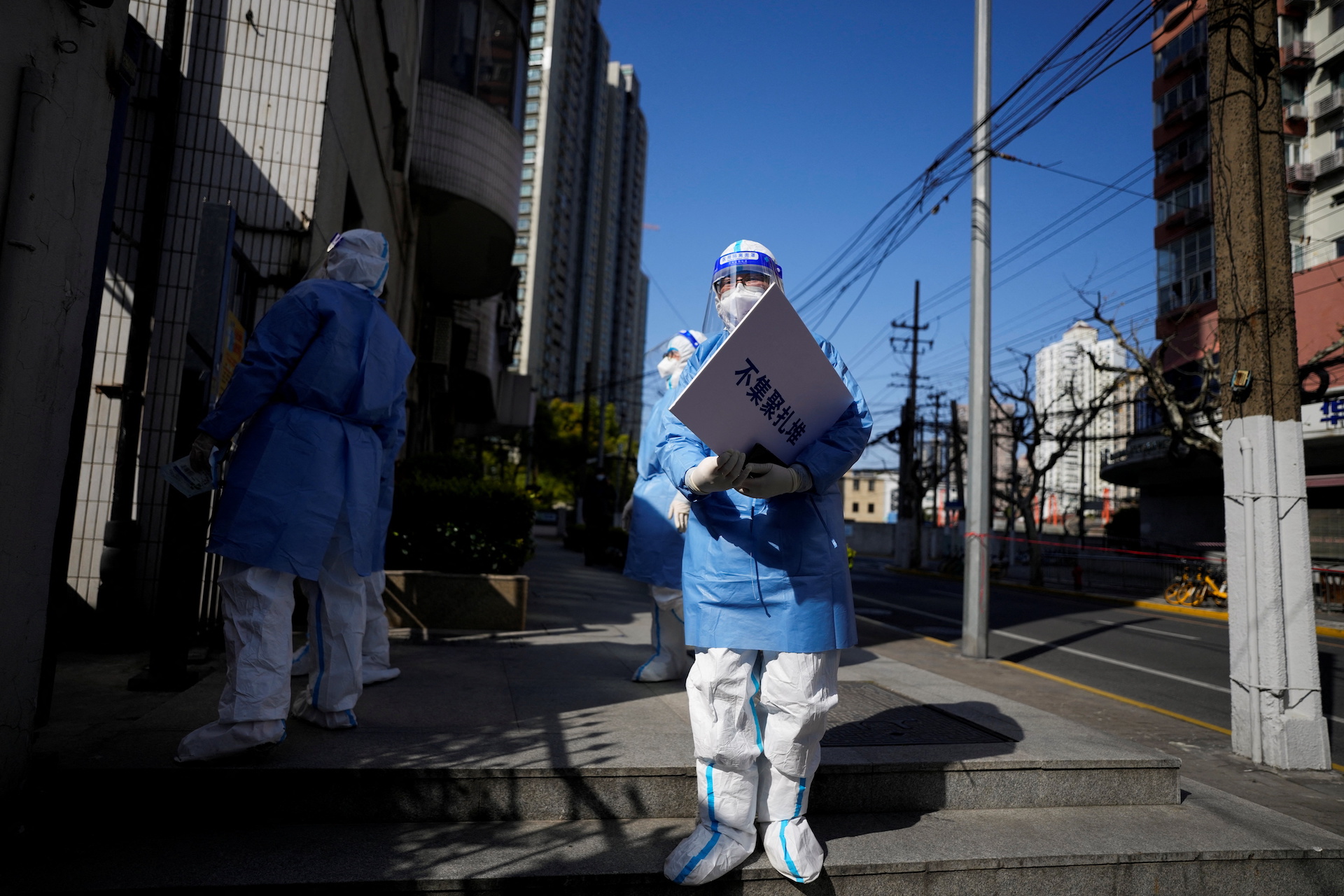A factory keeps running in locked-down Shanghai, as economy enters uncharted territory
China’s worst-ever outbreak of COVID threatens Beijing’s goal of economic stability.

Shanghai has entered its second week of lockdown with practically all of the city’s 26 million residents confined to their homes as the authorities seek to contain the worst outbreak of COVID in China since the first Wuhan outbreak in 2019.
This morning, the Shanghai Municipal Health Commission announced 268 new confirmed COVID cases and 13,086 asymptomatic infections.
- More than 38,000 medical personnel from 15 provinces across China have been dispatched to Shanghai, and nucleic acid testing teams with a daily handling capacity of 2.38 million test tubes have been mobilized.
- The cumulative number of local infections in the city from March 1 to April 3 reached 73,299, a number greater than all the infections that occurred in the entire Hubei Province (including the city of Wuhan) in 2020.
China news, weekly.
Sign up for The China Project’s weekly newsletter, our free roundup of the most important China stories.
Although the numbers are very low by global standards, this is the worst-ever outbreak of COVID in China, and presents an unprecedented challenge to Beijing’s COVID-zero policy as many other countries acclimatize to life with the presence of COVID in some form.
- Shanghai Port insists that traffic remains at business-as-usual levels, but the city’s financial district and streets are eerily quiet, as are its industrial hubs for semiconductors, electronics, and car manufacturing.
But some production lines are still running: One of these is Siasun Robot & Automation Co. Ltd 新松机器人, one of China’s largest robotics manufacturers. Surrounded by empty manufacturing plants in the New Pudong Industrial Zone, Siasun resolutely rumbles on behind closed doors. Its 91 employees entered their workplace on March 27 when the city’s lockdown was imposed, and have remained put since then, keeping production running nonstop.
- Siasun’s management decided to keep 91 out of 300 employees on site, and prioritized key orders for customers in Zhangjiagang, China, and Mexico. The 91 employees brought their own bedding and toiletries, and turned a conference room into a dormitory.
The takeaway: Shanghai’s current outbreak will place severe strain on the Chinese government’s target of 5.5% GDP growth this year.
The Caixin China Manufacturing PMI Index for March dropped by 2.3 percentage points month-on-month to 48.1, the lowest value since March 2020 — and this does not yet account for Shanghai’s all-encompassing lockdown. In terms of COVID and the economy, China is in uncharted territory.






